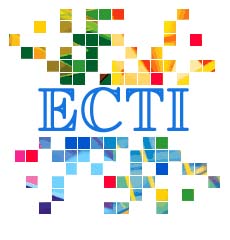Development Composite Customer Damage Function Using the Customer Survey Based Method for Power System Reliability Planning
Main Article Content
Abstract
The optimization in reliability cost-benefit analysis for distribution investment planning has been more attended on energy delivery services in Thailand. In this research, the reliability costs for the customer point of views represented as the interruption costs are presented. The data for analysis is provided from customer survey-based method during 2008-2009. Due to the direct and indirect impacts for electric customer in each category are different, the concept and methodology for data collecting based on customer survey is described. According to interruption costs are different for each sector, the customer survey results are classified into four customer sectors. In each sector, the individual customer damage function derived from survey is aggregated to develop sector customer damage function. The composite customer damage function utilized in regional reliability investment planning is also presented. In addition, the reliability cost evaluation in term of interrupted energy assessment rate for the selected industrial estate is determined in order to investigate industrial customer impact at the level of microeconomics scale. Application areas of reliability cost indices to enhance the effectiveness planning and operation of power distribution system are also recommended.
Article Details
This journal provides immediate open access to its content on the principle that making research freely available to the public supports a greater global exchange of knowledge.
- Creative Commons Copyright License
The journal allows readers to download and share all published articles as long as they properly cite such articles; however, they cannot change them or use them commercially. This is classified as CC BY-NC-ND for the creative commons license.
- Retention of Copyright and Publishing Rights
The journal allows the authors of the published articles to hold copyrights and publishing rights without restrictions.
References
[2] E. P. Raesaar, J. E. Tiigimagi and J. Valtin, “Assessment of electricity supply interruption costs under the restricted time and information resources,” Proceeding of International Conference on Energy & Environment Systems (IASME/WSEAS 2006), pp. 409-415, 2006.
[3] “Electricity Interruption Cost Study,” http://www.eppo.go.th/power/ERI-study-E/ERI-ExeSummary-E.html, 19 November 2005.
[4] Z. Bozic, “Customer interruption cost calculation for reliability economics: practical considerations,” Proceeding of International Conference on PowerCon 2000, Vol. 2, pp. 1095 - 1100, 2000.
[5] L. Goel and R. Billinton, “A procedure for evaluating interrupted energy assessment rate in an overall electric power system,” IEEE Transactions on Power Systems, Vol. 6, No. 4, pp. 1396-1403, 1991.
[6] Math H. J. Bollen, Understanding Power Quality Problems: Voltage Sags and Interruptions, IEEE Press (Power Engineering Series), 2000.
[7] R. Billinton, G. Wacker and E. Wojczynski, “Comprehensive bibliography on electrical service interruption costs,” IEEE Transactions onPower Apparatus and System, Vol. PAS-102, No. 6, pp. 1831-1837, 1983.
[8] G. Tollefson, R. Billinton and G. Wacker, “Comprehensive bibliography on reliability worth and electrical service consumer interruption costs: 1980-90,” IEEE Transactions on Power System, Vol. 6, No. 4, pp. 1508-1514, 1991.
[9] R. Billinton, G. Wacker and G. Tollefson, “Assessment of reliability worth in electric power systems in Canada,” Final Report for NSERC Strategic Grant STR0045005, June 1993.
[10] R. Billinton, S. Ali and G.Wacker, “Rural distribution system reliability worth evaluation using individual customer interruption cost characteristics,” International Journal of Electrical Power & Energy Systems, Vol. 26, pp. 235-240, 2004.
[11] G. Wacker and R. Billinton, “Customer cost of electric service interruptions,” Proceedings of the IEEE, Vol. 77, pp. 919-930, 1989.
[12] N. Uthathip, P. Teansri, P. Bhasaputra and W. Pattaraprakorn, “Development Industrial Outage Cost Model by Adaptive Neuro-Fuzzy Part II: Evaluation Outage Cost of High Energy Consumption
Industry,” paper No. E-44, Proceeding of the 5th GMSARN International Conference on Sustainable Development and Climate Change: Challenges and Opportunity in GMS, Luang Prabang City, Lao PDR, 17-19 November 2010.
[13] R. Billinton and R. N. Allan, Reliability Evaluation of Power Systems. Pitman Books, New York/London, 1984.
[14] P.L. Noferi , L Paris and L Salvaderi, “Monte Carlo methods for power system evaluation in transmission or generation planning,” the Annual Reliability and Maintainability Symposium, 1975.
[15] L. Salvaderi and R. Billinton, “A Comparison between two fundamentally different approaches to composite system reliability evaluation,” IEEE Transactions on Power Apparatus and Systems, Vol. PAS-104, pp. 3486-3492, 1985.
[16] R. Billinton, J. Oteng-Adjei and R. Ghajar, “Comparison of two alternate methods to establish an interrupted energy assessment rate,” IEEE Transactions on Power Systems, Vol. 2, pp. 751-757, 1987.
[17] J. Oteng-Adjei and R. Billinton, “Evaluation of interrupted energy assessment rates in composite systems,” IEEE Transactions on Power Systems, Vol. 5, pp. 1317-1323, 1990.
[18] L. Goel and R. Billinton, “Evaluation of interrupted energy assessment rates in distribution systems,” IEEE Transactions on Power Delivery, Vol. 6, pp. 1876-1882, 1991.
[19] L. Goel and R. Billinton, “Determination of reliability worth for distribution system planning,” IEEE Transactions on Power Delivery, Vol. 9, pp.1577-1583, 1994.
[20] B. Eua-arporn, “Fuzzy interrupted energy assessment rate based on actual system performance,” IEEE Transactions on Power Systems, Vol. 20, pp. 156-163, 2005.


